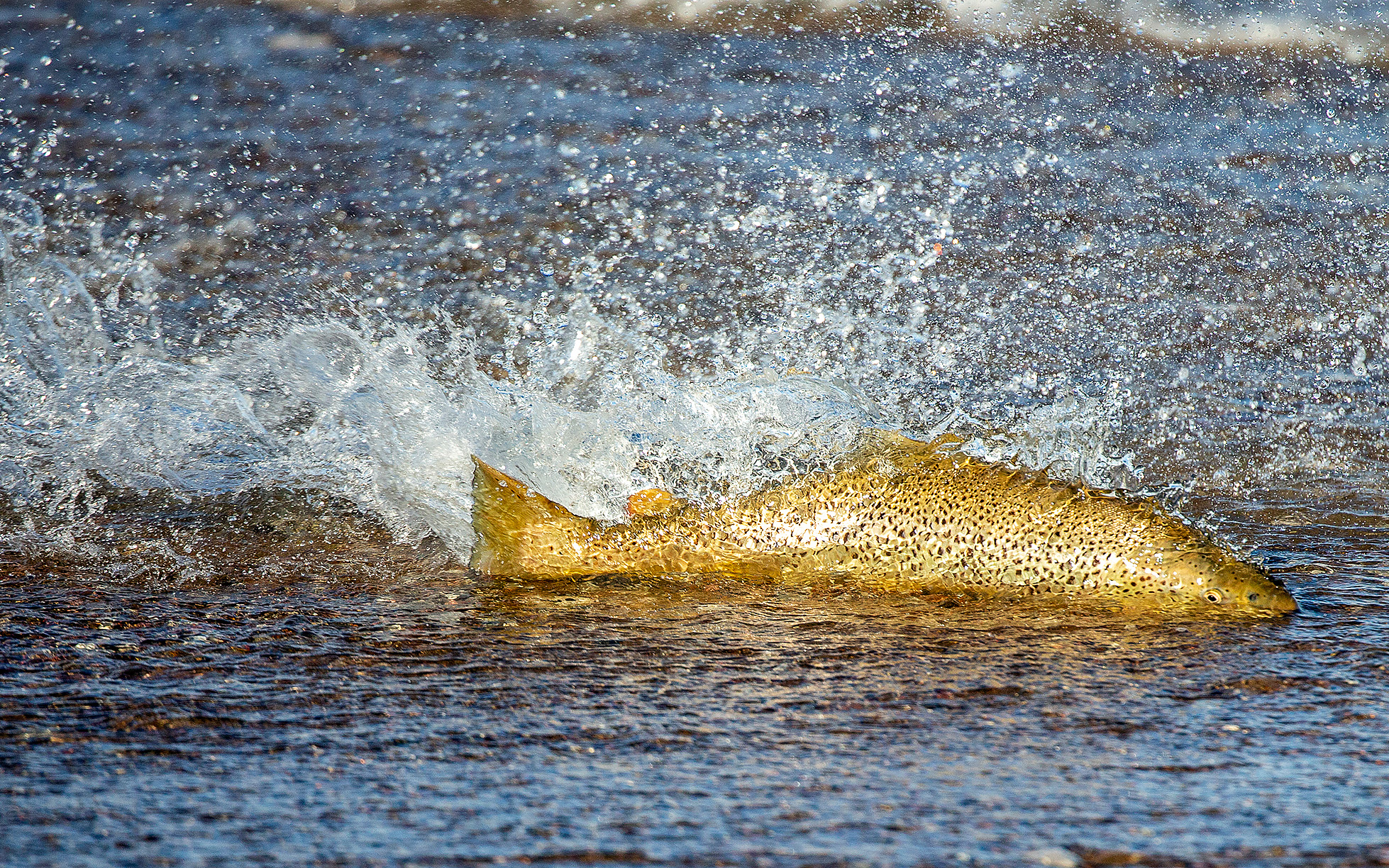River Virån
Restored wetlands and strengthened mussel populations
The rich ecosystem of the Virån river makes it important for biodiversity and it is also a Natura 2000 site. River Virån flows through a landscape with many lakes surrounded by farmland and deciduous forests. It is home to many species of fish, including the relatively rare species of lamprey. It is also home to thick-shelled mussels and otters. Under Improve Aquatic LIFE, habitat management will be carried out to improve fish habitats in the river as well as in wetlands and on the coast.
River Virån is located in south-eastern Sweden and is 160 kilometers long. It has its headwaters from lakes Ver and Illern in the north and from lake Hummeln in the south. The two main branches meet about six kilometers upstream of the Baltic Sea. The catchment area consists of a complex system of oligotrophic lakes and streams in a steep ravine terrain, surrounded by agricultural land and forests with large elements of deciduous trees. The entire Virån water system is a Natura 2000 site and is also of national interest for nature conservation.
Important for rare benthic animals and particularly valuable for the conservation of the endangered thick-shelled mussel
Biodiversity
River Virån has a high biodiversity with about 20 species of fish, of which the coelacanth and bull head are prioritized in the Natura 2000 site management plan. The glacial relict fish horned cusk occurs in the river, and four species of glacial relict crustaceans are found in the lakes: Mysis relicta, Pallaseopsis quadrispinosa, Monoporeia affinis and Limnocalanus macrurus
River Virån is also important for rare benthic animals. Six species of large mussels are found in the system, including the endangered thick-shelled mussel. The population in River Virån is the largest in the county, making it particularly valuable for the conservation of the species.
Also valuable for terrestrial species
River Virån also has high values for terrestrial species linked to aquatic environments. It provides a mosaic of habitats for breeding and roosting birds, such as kingfishers and oystercatchers. The upper parts of the catchment also support the otter, which is a priority species under the EU Habitats Directive.
In addition to River Virån and its lake system, the estuaries, coastal lagoons and large bays at the mouth of the Baltic Sea are also a separate Natura 2000 site with several protected habitats and bird species.
Impact on ecological status
According to the EU Water Framework Directive (WFD), River Virån currently has a moderate ecological status. It is affected by morphological changes, straightening and ditching which have changed the bottom structure and many habitats. Migration barriers have reduced connectivity so that migrating fish can no longer reach their spawning and nursery areas. It has also had a negative impact on the reproduction of mussels, which depend on host fish such as eurasian minnow and bull head, which have declined as a result of the changes. Large areas of wetlands and several lakes have been drained, which has changed the hydrology and led to recurrent water shortages during the summers. The coastal ecosystems of Kalmarsund and the Virån estuary are heavily burdened by excess nutrients, affecting the recruitment of predatory fish such as pike and perch.
Restoration measures
According to the management plan for the Natura 2000 site, it is a priority to ensure free migration, favor the reproduction of the thick-shelled mussel and restore wetlands.
Within the project, a migration barrier will be removed, opening 13 kilometers of the river for free migration for fish and other species. Biotope conservation will be carried out on around 13,500 meters of River Virån, focusing on important habitats for migratory fish and thick-shelled mussels. Restoration of 50 hectares of wetlands and shallow lakes will be carried out to recreate a more natural hydrology downstream. Measures in estuaries and coastal areas will be implemented to improve habitats and enhance recruitment of predatory fish.
Enhanced conservation status and natural values
These actions will improve connectivity, hydrology, water quality, biodiversity, fish production and habitats. They will strengthen the conservation status of the common coypu, bull head and the thick-shelled mussel, and benefit the species eurasian minnow typical of the Natura 2000 site, which is important for mussel reproduction.
The restorations will help to preserve and develop the high natural values of the river, with a particular focus on maintaining and enhancing important habitats for wildlife, reducing water scarcity and improving the ecological status of River Virån and its coastal environments.


Freshwater pearl mussel survival depends on host fish
Barriers to migration
Removing migration barriers and opening up the river pearl mussel’s host fish, salmon and trout, will increase the species’ ability to reproduce. Barriers to migration come in many forms, from natural to man-made dams and power plants. In some cases, a good solution may be to build a wildlife passage to allow fish and other organisms to bypass the migration barrier.
River Virån
Latest news from the project area
Here you can read news about the target species and the actions being taken in the project area.

